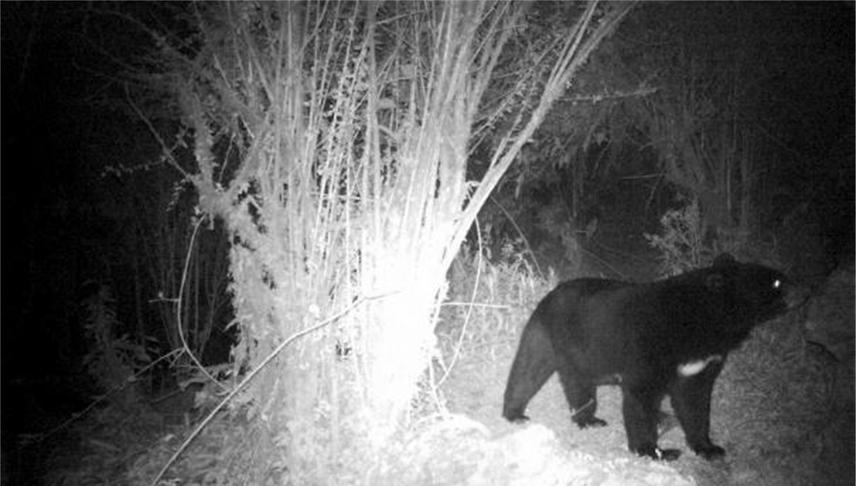Rabin Kadariya
Other projects
21 Sep 2015
Genetic Variation, Ecology and Conservation of Asiatic Black Bears (Ursus thibetanus) in Mountain Landscape of Nepal
Genetic variation is considered important for a population to better acclimatize to changing environment. The study provides a vital contribution to conservation policy for long-term management of Asiatic black bears population in mountain landscape of Nepal as it evaluates potential genetic consequences of habitat fragmentation and implication on conflict mitigation priorities. Knowledge of genetic structure and gene flow in wild populations are crucial for making decision to improve their sustainability. Phylogenetic relationship shows evolutionary status of Himalayan subspecies. The traditional measures and fence were not seen effective for crop damage control so compensation scheme is the ultimate solution for bear conservation.

Himalayan black bears in Annapurna conservation area. ©ACAP.
Asiatic black bears are threatened in much of its habitat and designated as a vulnerable species globally [Garshelis and Steinmetz 2008] and an endangered mammal of Nepal [Jnawali et al. 2011]. Habitat degradation and poaching were major threats to bear survival before the 1970s, whereas human-bear conflict especially crop raiding and retaliatory killing are major recent threats in Annapurna Conservation Area (ACA) of Nepal. We found that bears are distributed in most of the mountain forest but information on population status and genetics of these populations from Nepal is not available. Genetic analyses give important insights into population structure and connectivity among such wide-ranging animals, historic and current gene flow among populations, as well as information about genetic diversity [Paetkauet al.1998]. Actually, instances of human-bear conflict have increased considerably in ACA with frequent reports of bears coming to the crop fields and getting involved in conflicts with villagers. There is no any provision for the compensation of agricultural crops whereas the government has some provision for human causalities. Although bears are protected legally, we observed they are being killed by poisoning, snares and gunshot to protect agricultural crops even in the conservation area.
DNA can be extracted from the non-invasive (fecal) samples of Asiatic black bears. The taxonomic identification of bears in Nepal is unknown whether it is same as previously reported Asiatic black bears (Ursus thibetanus thibetanus) from China or new Himalayan subspecies (Ursus thibetanus laniger). This study explores the evolutionary status of Asiatic black bears from Nepal using mitochondrial DNA analysis. It has been shown that reduced genetic variation resulting from population reductions, genetic drift, and founder effect that may hinder adaptation of a population to a new environment and increase the likelihood of its extinction [Frankham and Ralls 1998]. Therefore, this study investigates minimum population, sex ratio, population genetic structure, genetic relatedness and diversity of Asiatic black bears in ACA by microsatellite analysis. It evaluates the potential genetic consequences of habitat fragmentation and other threats on bear populations. Knowledge of the genetic structure and gene flow in wild populations is an important component of adaptability and crucial for making decisions to improve their sustainability. High genetic diversity means that community-based conservation of ACA is effective. The findings of genetic study will be key indicator to evaluate effectiveness of community-based conservation and to develop a future strategy for the maintenance of genetic diversity.
Agricultural crops are a major source of income and livelihood in mountain farming system. The bear-related conflicts are leading to conservation threats for the survival of bears so Community Based Crop Damage Compensation Scheme (CBCDCS) will be developed with the active involvement of local communities and authorities in a high conflict-prone village so that it can be implemented in ACA, other protected areas of Nepal and all bear dwelling courtiers. This initiation provides a vital contribution to conservation policy for long-term management of Asiatic black bears population in mountain landscape of Nepal.